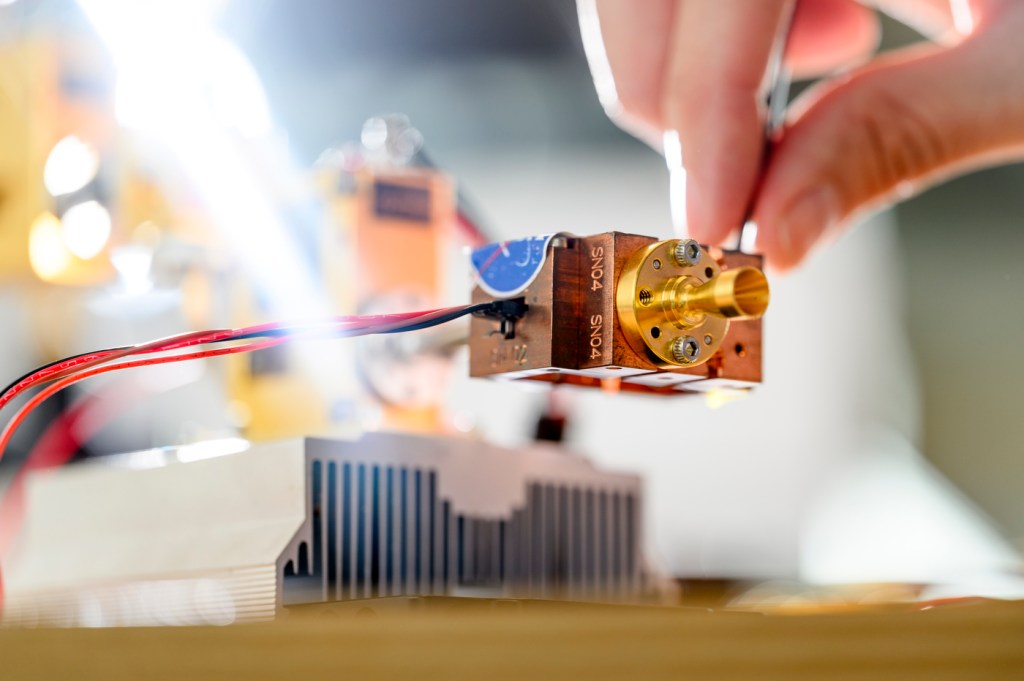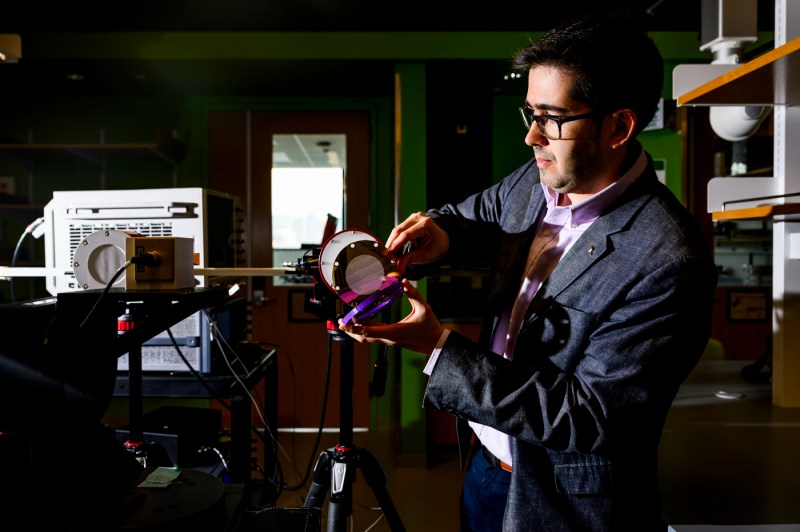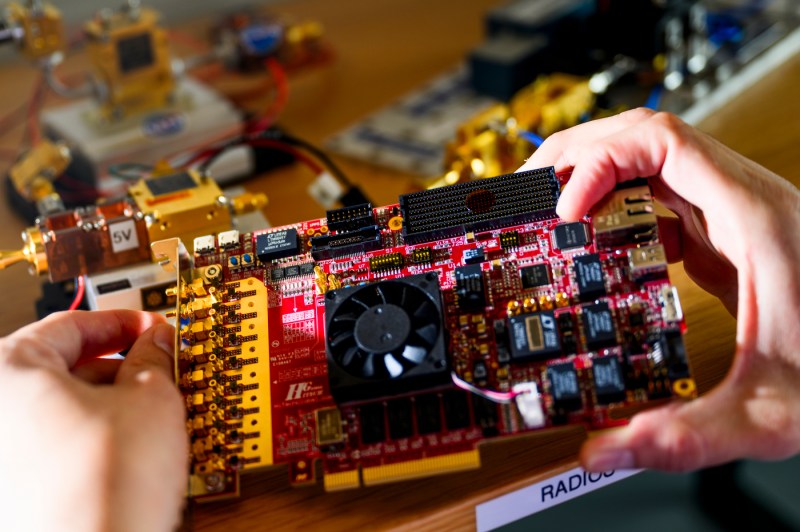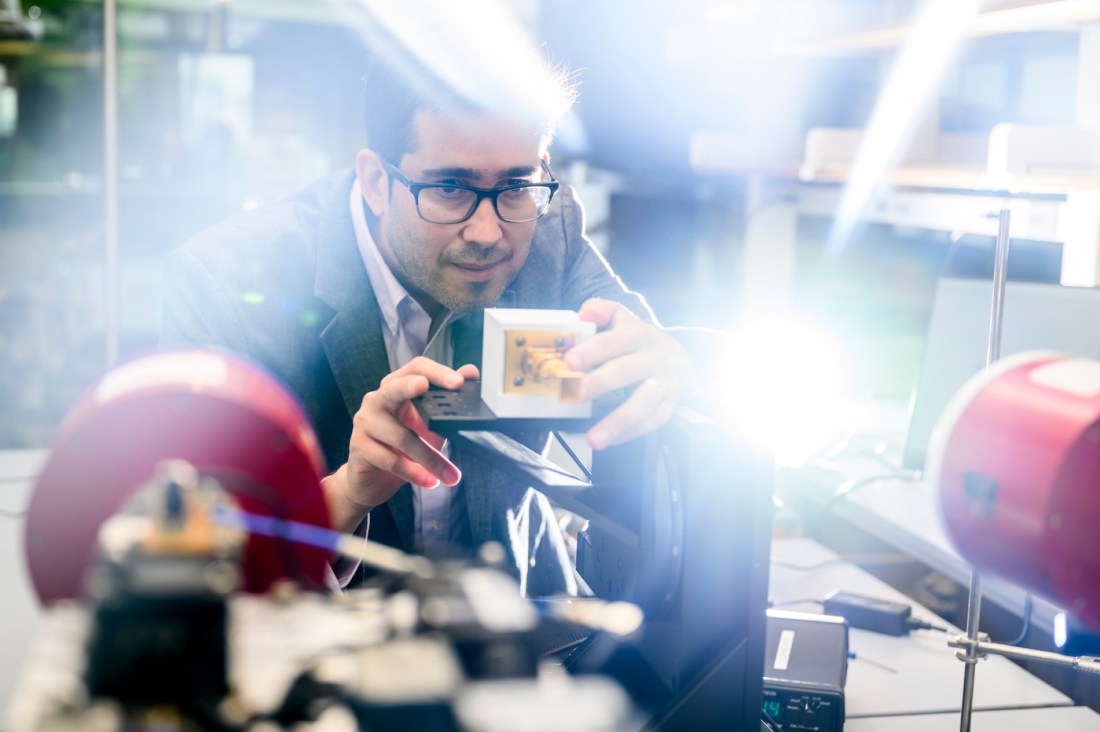Northeastern researchers partner with student club to develop high-speed satellite testbed that could transform internet communications

The next big breakthrough in internet communications may very well be found in the stars, and Northeastern University is helping lead the charge.
A group of Northeastern engineering professors has partnered with student satellite club Project Horizon to develop and test what could become the world’s first sub-THz wireless satellite network testbed.
If successful, the teams say their findings could one day enable the use of satellites to help provide high-speed internet access to remote parts of the world and help keep people connected during environmental disasters.
“Those satellites will not just be serving a country, including the rural areas or the underpopulated areas, but they will effectively be covering anywhere in the world,” says Josep Jornet, a Northeastern professor of electrical and computer engineering and the principal investigator on the project.
Others working on the project include electrical and computer engineering professors Tommaso Melodia and Ken Duffy, as well as Andrew Gouldstone, a professor of mechanical and industrial engineering. They are also working in collaboration with Morehead State University on the project.



For more than a decade, Jornet has been studying terahertz bands (THz), a form of wireless frequency technology that has promising applications for the internet, given the bands’ ability to enable ultra high data speeds. They are seen as evolutionary in enabling carriers to move from 5G networks to 6G networks in the years to come.
Terahertz technologies offer significantly faster data speeds than what you might find in your cellphone or laptop today, for example, which operate at lower gigahertz frequencies, Jornet explains.
Jornet and his colleagues want to bring those kinds of speeds to space to make satellite communications significantly faster.
Today, smartphones made by Apple and Google do offer some satellite connectivity, allowing users to send SOS messages when they are in areas with little service. Satellite internet services such as StarLink also exist, but the room for growth is significant, Jornet explains.
Featured Posts
“By using terahertz frequencies in space, we can speed up those communications to enable real-time interactions, whether it’s through audio streaming, video streaming, or both,” he says.
Jornet and his colleagues are working directly with Project Horizon on the project, which is being supported by NASA through the organization’s CubeSat Launch initiative.
While Jornet will be providing the students with the terahertz radio, the students have been tasked with developing the satellite system test platform the radios will be placed in. The plan is to launch the satellite sometime in 2027.
“This project could have far-reaching impacts in the future, assuming we can get it to the state-of-technology readiness after we launch the satellite,” says Brian Hulbert, program lead for Project Horizon.
Once in space, the system will be separated into two satellites that will immediately begin to communicate with each other as they drift apart to test the strength of the terahertz technology.
Once the satellites are far enough away from each other, they will then start to communicate to a ground station back on Earth, Jornet says.
“We’re going to be testing two things,” he says. “We’re going to be testing inter-satellite communications, which is one satellite to another, and then uplink from ground to satellite and downlink from satellite to ground.”
Jornet says it’s important for the team to first test the satellite’s communications system to make sure it works before they send over any data with actual information on it. Those insights will then translate to applications like providing internet access for remote areas or helping people stay online during natural disasters, he says.
“If everything goes fine with this proof of concept, we show people that this can work in space, but more importantly, we get channel information,” he says. “We can understand what happens to our signals, which means that we can start designing. We start optimizing our communications for space environments, not just for ground communications.”











